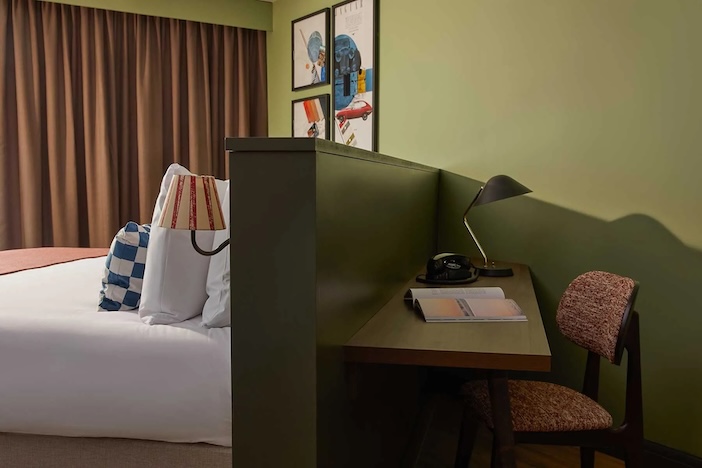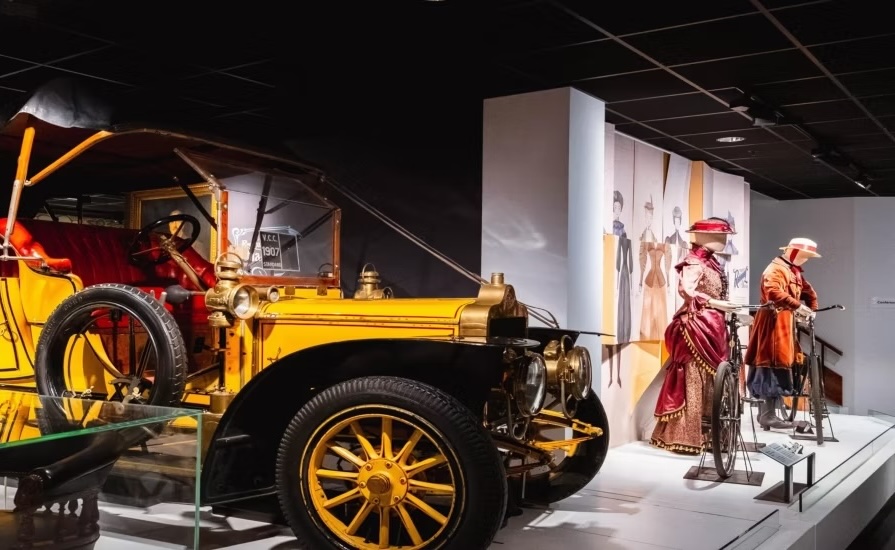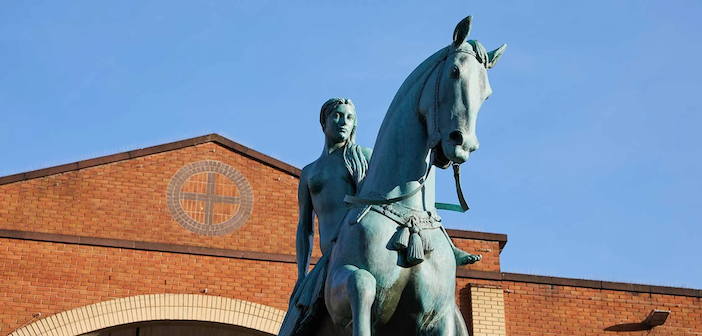It’s not often I get sent to Coventry – in any sense of the word. But after attending a wedding in Leicestershire, I decided to stop off to have a look around and learn about its history. And what a fascinating history it has! I’d heard about its cathedral (famously bombed during the Blitz in 1940, now standing as a poignant symbol of hope and reconciliation), about Lady Godiva’s legendary horse ride, and about poor Peeping Tom, who allegedly spied on her and went blind.
But Coventry is also famous for its incredible manufacturing heritage – ribbons, bicycles, clocks and watches, motorbikes and cars – there’s not much it hasn’t produced. Coventry became a major hub for the automotive industry in the UK, with Daimler being one of the pioneering manufacturers in 1896. This was followed by more than 50 vehicle manufacturers establishing their production hubs here, including Jaguar, Armstrong Siddeley, Alvis, Hillman, Chrysler, Triumph, Singer, Humber, Lanchester, and Rover.

During World War II, Coventry suffered devastating damage from German bombing raids, particularly during that fateful November 1940 night. But from this destruction came the opportunity for reinvention. The city wasn’t simply rebuilt – it was completely transformed, allowing urban planners to work with a clean slate and create something entirely new.
This led to the groundbreaking Coventry Precinct, which opened in 1955 as the UK’s very first shopping precinct. It was a revolutionary idea at the time, introducing the then-novel concept of pedestrianised shopping areas that separated foot traffic from cars, creating a safer and more pleasant experience for everyone. This pioneering urban planning concept has influenced city design across the country to this day.
My hotel – the stylish new Hotel Indigo – was on one such pedestrianised street, and I was delighted to see it featured plenty of thoughtful reminders of the local area’s past and present. There was an Austin Healey parked in its lobby area, along with old advertisements and posters from Coventry’s bicycle manufacturing heyday. The decor of the building – designed by Manchester-based studio, Chapman Taylor – was contemporary with an industrial edge.

The 101 bedrooms fall into three different themes – the spinning wheel, motor city, and re-imagining regeneration. All have Hypnos beds with Egyptian cotton linen, which was an absolute treat to sink into after a day’s sightseeing. My room also had a complimentary minibar, plus a Nespresso machine (though not with Nespresso-brand pods). A mural of Lady Godiva and funky gilded hand-shaped hooks on the walls injected a lovely bit of personality.
As I was staying on a Sunday, I headed downstairs to Cogs restaurant for a spot of Sunday lunch. I have to say that vegetarian options were quite limited (there wasn’t a veggie roast, for example), but meat-eaters are very well catered for. This was fairly surprising for a hotel of this standard in 2025, but you can at least order a main from the regular menu and pair it with the usual roast sides. So I went for the miso stuffed aubergine, followed by the sticky toffee pudding, which was delicious. I didn’t try the ‘Wine Wall’ but I loved the look of it – it reminded me of Vagabond wine bar in London, which has a similar concept.

After lunch, I visited the wonderful – and free – Blitz museum beneath the bombed-out cathedral, which was really moving, and staffed by two knowledgeable and enthusiastic local volunteers – a real tribute to the city’s terrible experience.
After that, I popped into the nearby Herbert Art Gallery & Museum, mainly to check out its Lady Godiva room. But most other exhibitions and galleries appeared to be closed at the time – a real shame given they’ve only just started charging for entry. Hopefully the museum will improve and grow with this new funding over time. I ran out of time to visit the Transport Museum, so will just have to go back another time for that one.

All in all, it was a really interesting weekend. I learned so much about Coventry’s long and varied history, and the huge impact it had on global manufacturing – something I’d love to see the city celebrating more proudly. It has great potential to do so. I genuinely believe that with a little investment and the right marketing approach, Coventry could be a world-famous destination drawing tourists from far and wide.
Hotel Indigo feels like a great addition to the city, as it thoughtfully celebrates this heritage and industrial past through its design and atmosphere. Hopefully it paves the way for more of this kind of regeneration throughout Coventry itself. After checking out, it was just metres from the train station, so I was soon on my way home. But I’m definitely hoping to return.
Room rates from £103. Hotel Indigo Coventry is situated at Friargate, Coventry, West Midlands, CV1 2GN, UK. For more information, please visit www.coventry.hotelindigo.com.




